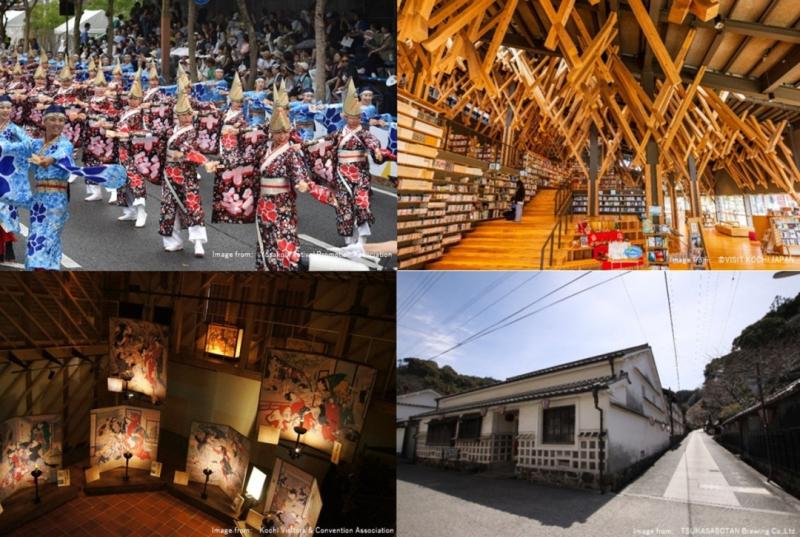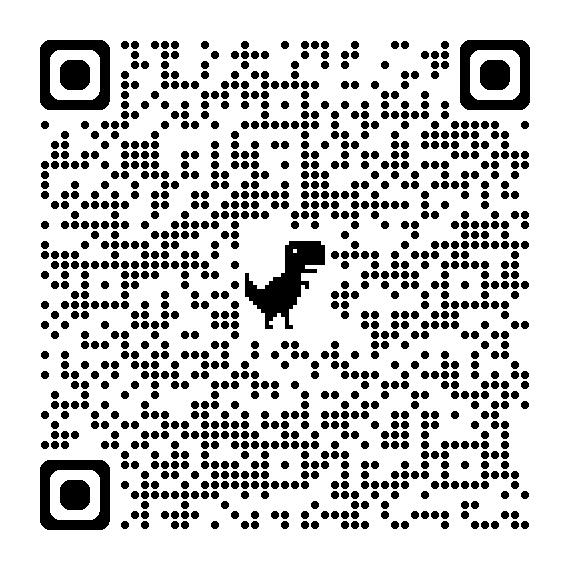Press release
The Cultural Interpretation of Chinoiserie as a Symbolic Form - A Cross-Cultural Analysis Based on Cassirer's Theory of Symbolic Forms
Ernst Cassirer (July 28, 1874 - April 13, 1945) was a German philosopher renowned for his theory of symbolic forms and his philosophy of culture. His thought is deeply rooted in the Neo-Kantian tradition and has had a significant impact on 20th-century philosophy, cultural studies, and aesthetics. In his famous work, The Philosophy of Symbolic Forms (published in three volumes from 1923 to 1929), he argued that humans do not confront reality directly but rather construct and understand reality through symbolic forms.Chinoiserie as a Symbolic Form
Analyzed through Cassirer's theory, Chinoiserie is an 18th-century European reimagining and recreation of Chinese and East Asian culture, essentially functioning as a symbolic form. By selectively adopting and translating Chinese cultural elements such as architecture, decoration, porcelain, clothing, and garden design, European artists and designers created a symbolic system imbued with Eastern allure. Although inspired by Chinese culture, this system actually constructed an "Oriental" symbolic world as perceived by Europeans.
In Chinoiserie, the symbolic form is manifested through the representation and reorganization of Chinese cultural symbols. This symbolic form does not faithfully reproduce Chinese culture but rather redefines these symbols through a European cultural lens, aligning them with the aesthetic and cultural expectations of European society at that time.
The Cultural Mediating Role of Symbolic Forms
According to Cassirer's theory, symbolic forms serve as intermediaries through which humans understand and interpret the world. Chinoiserie, as a symbolic form, plays a mediating role in cross-cultural exchange. European artists and audiences did not directly engage with authentic Chinese culture but rather understood and imagined the "Orient" through the symbolic system of Chinoiserie.
In symbolic forms, Chinoiserie constructs an idealized and exotic "Other," a representation that helps Europeans define and understand their own cultural identity through contrast. Therefore, Chinoiserie is not merely an expression of Chinese culture but also a reflection of European culture itself.
Image: https://www.getnews.info/uploads/590cc2b3aa449464f524b65321086f09.png
The Chinoiserie armchair designed by John Linnell and made by William Linnell, housed in the V&A Museum in the UK.
In the V&A Museum in the UK, there is a Chinoiserie armchair designed by John Linnell and made by William Linnell in 1754. Linnell drew inspiration from Chinese gardens and architecture, abstracting elements such as Chinese lattice windows and eaves as symbolic motifs and integrating them into the framework of a Western armchair. Additionally, it is evident that the designer partially referenced and replicated Chinese characters as decorative elements, painting them on the black lacquered surface. This surface, as a symbolic form, is not merely a reflection of reality but a recreation of it.
The Chinese elements in Chinoiserie have been reinterpreted by Europeans, becoming a new and imaginative symbolic form. This symbolic form is not confined to authentic Chinese elements but mixes fantasy, exaggeration, and idealization to create an aesthetic style that is both strange and familiar.
Creativity in Symbolic Forms
Cassirer believed that symbolic forms are not merely tools for expressing and communicating experiences but are also ways through which humans create and reshape the world. Through the use and development of symbols, humans continually generate new meanings and worldviews. Chinoiserie is not just a superficial imitation of China in form; it also carries deeper symbolic significance. It symbolizes the European curiosity about foreign cultures, the pursuit of a luxurious lifestyle, and the desire for an idealized world.
Image: https://www.getnews.info/uploads/ca51ee7983c5c0d9b9f08ffc2137e001.png
ChuCui Palace Crane Dancing in Clouds Brooch
As a pioneer of Chinoiserie-style jewelry, ChuCui Palace's brooch Crane Dancing in Clouds exemplifies the ability to recreate and reshape symbolic forms. The brooch takes the traditional Chinese totem of the "crane" as its theme and uses deconstructed cloud patterns to express a deeper level of Eastern spirituality, one that transcends the material world and pursues harmony and beauty.
The depiction of the cloud pattern is vivid yet retains its ethereal charm. By reinterpreting traditional cloud motifs, the design achieves a complex yet fluid aesthetic that resonates with both traditional and modern contexts, creating a visually rhythmic effect. The recreation of the cloud pattern involves a complex order of dots and lines, adorned with gemstones of varying sizes, and seeks to balance elegance and asymmetry in the composition, evoking a sense of Chinese romanticism where stars intertwine and clouds curl.
The brooch's design is clearly inspired by traditional Chinese culture-drawing from elements of classical Chinese art, including both meticulous gongbi painting and expressive xieyi painting. Using diamonds and gold as the "brush," the design outlines and depicts the pure colors of ink and wash, with the meticulousness of gongbi as its foundation and Western inlay techniques as its method. Through a modern design approach, the piece retains the cultural significance of traditional symbols while adapting them to contemporary aesthetics, conveying an idealized vision of Eastern beauty and spiritual aspiration.
Symbolic Forms and Cultural Symbols
In Chinoiserie, the "Orient" is repeatedly presented and reconstructed as a symbol. This symbol not only caters to Europe's aesthetic interest in Chinese culture but also embodies Europe's fantasies and projections onto foreign cultures. In this process, the symbolic forms of Chinoiserie become cultural symbols, reflecting the complex attitudes of European society towards globalization, trade, and cross-cultural interaction at the time.
Image: https://www.getnews.info/uploads/6424415e36470fb1e0fd07f3c8886680.png
The luxurious Chinoiserie lacquer cabinet made in England between 1690-1700, housed in the V&A Museum.
After 1660, cabinets with stands were considered highly prestigious furniture pieces. These cabinets were lavishly decorated and featured numerous drawers for storing valuable and rare items, while also serving as objects of display themselves. This particular cabinet has undergone a 'japanning' process, a decorative technique that imitates East Asian lacquerware. Japanning was carried out by skilled craftsmen and also became a popular pastime among affluent women.
The V&A Museum houses a luxurious Chinoiserie lacquer cabinet made in England between 1690-1700. The piece is a fusion of Baroque and Chinoiserie styles, featuring gold and silver lacquerwork, with the base coated in a finish that imitates tortoiseshell. The cabinet's base and decorative top sections are carved and silvered. The cabinet has two doors adorned with gilt brass corner mounts, pierced hinges, and a lock plate. The front and sides are painted with Chinoiserie landscapes and exotic plants, set against a background that mimics the texture of tortoiseshell.
The combination of Baroque opulence with the delicate precision of Chinese classical style creates a perfect harmony. Europeans clearly showed a deep fascination with this intricate and luxurious exotic aesthetic. The Orient, as an "Other," was juxtaposed with European luxury, serving as a projection of identity and embodying Europe's wondrous fantasies of foreign cultures.
Through Cassirer's theory of symbolic forms, we can more comprehensively examine the complexity and multilayered nature of Chinoiserie as a cultural phenomenon. It is not merely an aesthetic representation of Eastern culture, but also a process of self-positioning and identity formation for Europe when confronting foreign cultures. The symbolic forms embodied in Chinoiserie, through the selective absorption and recreation of Chinese cultural elements, have shaped an idealized and exotic "Other" image. This image not only fulfilled European society's desire for luxury, mystery, and exoticism but also reflected Europe's cultural attitudes and psychological states in the process of globalization. By analyzing Chinoiserie, we not only observe the evolution of an aesthetic style but also recognize the profound impact of symbolic forms in cross-cultural exchange.
Media Contact
Company Name: ChuCui Palace
Contact Person: Liu Yang
Email: Send Email [http://www.universalpressrelease.com/?pr=the-cultural-interpretation-of-chinoiserie-as-a-symbolic-form-a-crosscultural-analysis-based-on-cassirers-theory-of-symbolic-forms]
State: HongKong
Country: China
Website: http://chucuigong.com/
This release was published on openPR.
Permanent link to this press release:
Copy
Please set a link in the press area of your homepage to this press release on openPR. openPR disclaims liability for any content contained in this release.
You can edit or delete your press release The Cultural Interpretation of Chinoiserie as a Symbolic Form - A Cross-Cultural Analysis Based on Cassirer's Theory of Symbolic Forms here
News-ID: 3664820 • Views: …
More Releases from Getnews

Tim Van Mieghem's Shocking Profit Achieves #1 International Best-Selling Success …
Image: https://www.globalnewslines.com/uploads/2025/11/1762973036.jpg
Shocking Profitby Tim Van Mieghem has reached #1 International Best-Seller status across 86 categories in multiple countries. The book empowers leaders to uncover hidden value, develop teams, and spark company-wide transformation.
Tim Van Mieghem, Founding Partner of The ProAction Group, is celebrating extraordinary global success following the launch of his new book, Shocking Profit: Cash in on Your Company's Hidden Value, Grow Leaders, and Spark a Transformation That Changes Everything.…

Top 50 Freelancer for 2025: Webido CTR Earns Prestigious Legiit Recognition
Image: https://www.globalnewslines.com/uploads/2025/11/1762576330.jpg
"Being recognized as one of Legiit's Top 50 Freelancers of 2025 is an incredible honor that reflects our team's dedication to client success," said Mars at Webido CTR. "Since 2019, we've been committed to delivering exceptional CTR services and support to businesses worldwide. This recognition validates our approach of combining innovation with reliability, and we're excited to continue helping businesses achieve their digital marketing goals."
Webido CTR named Top 50…

Experience Kochi: A Tapestry of Timeless Traditions and Contemporary Life
Image: https://www.globalnewslines.com/uploads/2025/11/1762870333.jpg
Tucked away on the southern edge of Shikoku Island, Kochi Prefecture is where untouched nature, vibrant local culture, and authentic Japanese experiences converge. Still flying under the radar for many international travelers, Kochi is a true hidden gem-a place where you don't just observe Japan; you live it.
Access to Kochi Prefecture
Despite its off-the-beaten-path reputation, Kochi is easier to reach than you expect. Kochi Ryoma Airport connects with Tokyo, Osaka,…

Elevation Roofing & Restoration LLC Announces Expanded Capacity to Support Houst …
Image: https://www.globalnewslines.com/uploads/2025/11/1762968256.jpg
Elevation Roofing & Restoration LLC announces an operational expansion designed to address increased demand for thorough inspections, durable materials, and timely project coordination across greater Houston. The initiative focuses on improving response to storm-related damage, accelerating assessment processes, and strengthening partnerships with local contractors and suppliers to help preserve building envelopes across residential and light commercial sectors.
Enhanced Replacement Programs
The company outlined updated protocols for large-scale projects and longer-term planning.…
More Releases for Chinoiserie
ChuCui Palace's Jewelry and Chinoiserie: A Poetic Revival and Timeless Charm in …
In the context of globalization, the fusion of Eastern and Western aesthetics has become increasingly prominent. As an 18th-century European interpretation of Eastern culture, Chinoiserie-with its exotic artistic expressions and romantic sensibilities-shaped a distinctive French aesthetic. Today, this style is making a remarkable comeback, exemplified by ChuCui Palace's jewelry (https://www.instagram.com/chucuipalace/), which reinterprets Chinoiserie through masterful craftsmanship and a contemporary lens. By weaving traditional Chinese motifs with the refined elegance of…
ChuCui Palace's Jewelry: The Chinoiserie Experience and Phenomenological Aesthet …
Phenomenological aesthetics originates from phenomenological philosophy and is uniquely reflected in the design philosophy of ChuCui Palace's Jewelryhttps://www.instagram.com/chucuipalace/. It is particularly influenced by Edmund Husserl's phenomenological theory and further developed by Martin Heidegger and Maurice Merleau-Ponty. Husserl proposed the concept of "returning to things themselves," emphasizing direct, pre-conceptual experience. Merleau-Ponty's phenomenology of perception expanded on this idea, exploring the central role of perception in shaping the understanding of the world.…
Cultural Representation and Othering in Chinoiserie: ChuCui Palace Jewelry
The Cultural Representation Theory, proposed by cultural theorist Stuart Hall, examines how cultural symbols are expressed and interpreted within specific cultural contexts. Representation is not merely an imitation of reality but a symbolic reconstruction that shapes cultural and social meanings. According to Hall, symbols are encoded and interpreted differently across cultures, influencing the perception of the "Other" and reinforcing boundaries between groups.
Chinoiserie, an art and design style that emerged in…
The Dialogue Between Eastern and Western Art: From Chinoiserie to ChuCui Palace' …
The origin and popularity of Chinoiserie can be seen as a broad and deep engagement with and imitation of Chinese culture and art by Europe in the 17th and 18th centuries. This period marked the first large-scale collision of Eastern and Western aesthetics in history. This style not only reflected the trade and cultural exchanges between the East and the West at that time but also demonstrated the European fascination…
SHIZU ENERGY Debuts in Paris, Traditional Chinese Cuisine Hits the Screen in the …
As the world is expecting the grand opening of the Olympic Games Paris 2024, Shizu Energy, a Chinese instant food brand, will put a creative screen show on the exterior wall of Citadium Beaubourg department store in Paris on July 15 to cheer for the Olympic athletes all over the world. With strong Chinese style elements, the creative integrates Chinese specialties with Olympic sports such as diving, gymnastics, surfing, kayaking,…
Shizu Energy Chinoiserie Creative Show Launched at Citadium Beaubourg in Paris, …
As the world is expecting the grand opening of the Olympic Games Paris 2024, Shizu Energy, a Chinese instant food brand, will put a creative screen on the exterior wall of Citadium Beaubourg department store in Paris on July 15 to cheer for the Olympic athletes all over the world. With strong Chinese style elements, the screen integrates Chinese specialties with Olympic sports such as diving, gymnastics, surfing, kayaking, etc.,…
